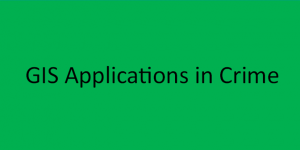GIS can be used in various industries and one of these industries is the real estate. Besides mapping of the areas in real estate, GIS can also play an important role spatial analysis and determination of the absolute location where these need to be put up.
1. Location: The GIS and real estate markets both center around location. Location is the essence of geographic data and is the top priority for home and property seekers. GeothinQ’s market data takes the guess work out of the sorting through multiple tables and layers from various sources of land data, values, and transactions.
2. Spatial Analysis: Access to built-in data layers provides robust and valuable information to your client. Besides locating the property, and what is happening around it, geothinQ gives you the ability to query and search through the available data, giving you the power to answer your client’s specific questions and test out scenarios for common concerns such as flood zones and overlaying zoning.
3. Sales: With geothinQ, you can quickly locate properties by address and explore factors that are imperative to potential buyer’s decision-making, such as property ownership, value, and last sale.
4. Effective Communication/Data Visualization: In an increasingly tech-centric world, visuals can communicate things that an email or even a face-to-face conversation cannot. GeothinQ allows you to export data tables and PDF maps of property findings. Graphics tools further personalize your map for the needs of your viewers. Measuring tools help determine acreage, distance, and location coordinates. Using geothinQ on a team or in an office? Effortlessly drop pins for areas of interest or add notes, photos, and files to share leads with your colleagues.
5. Effective Communication/Data Visualization: Real estate professionals aren’t likely to be found behind a desk eight hours a day, five days a week. You go where your clients are, and so does geothinQ. Our data is mobile on-demand and in real time – giving you the power to access it and assist your clients any time on a tablet, smart phone, or computer.
6. GIS Makes Performing Market Analysis Better: Market analysis is one of the most important steps in any real estate practice. Consider real estate sales versus valuation. Research needed for each may differ in depth, but both require analyzing comparative sales in a given location. Prior to analysis, additional research is conducted on comparable properties recently sold in the subject property’s area.
7. Mapping: Geographical Information Systems store data in databases and then represent it visually in a mapped format. People from different professions use maps to communicate. e.g. Google, GPS, Here all utilise maps for common use.
8. Planning and Community Development: GIS help us to better understand our world so we can meet global challenges. Today GIS technology is advancing rapidly, providing many new capabilities and innovations in planning.
9. Crowd Simulation: Mastering the collective dynamics of interacting objects in urban phenomena at the scale of individual households, people, and units of real estate and at time-scales approaching “real time”.
10. Solar Exposure: Harvesting light to assess the suitability of installing solar (photovoltaic) panels on roofs using 3D city models and geometric information such as the tilt, orientation and area of the roof.



